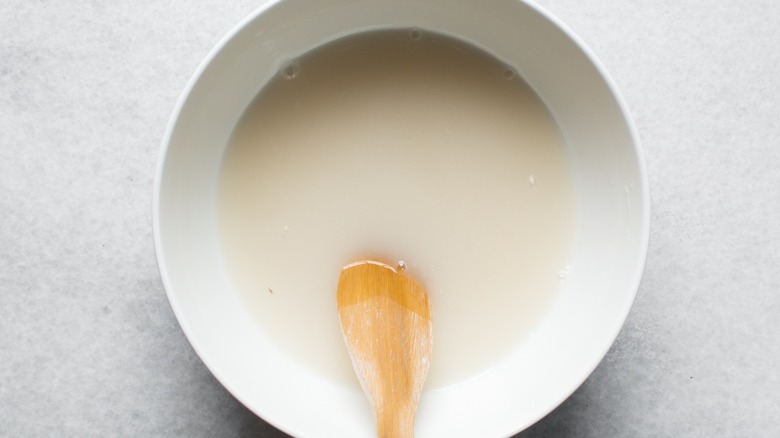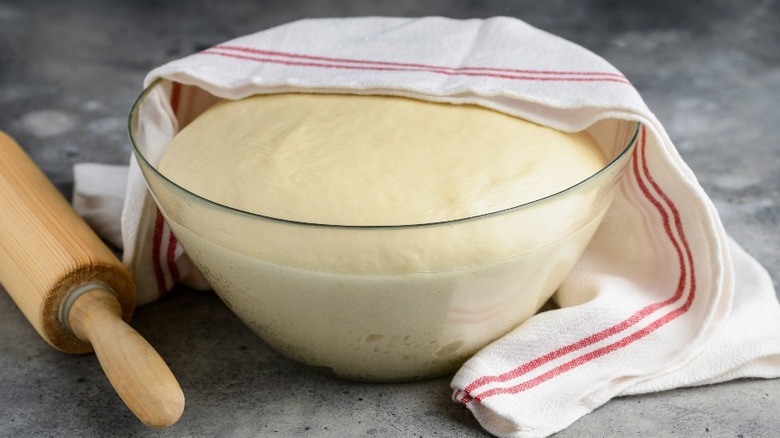Here's How To Bloom Your Yeast (And Why It's Crucial)
Picture this: You have every ingredient in your pantry to make that new pumpkin spice cinnamon roll recipe your favorite food blogger recently posted for fall. You can't wait to dig into these cinnamon-y, fluffy clouds of dough but once you start baking them, catastrophe strikes. Within one of the first steps of the recipe, which is to bloom the yeast (that's non-instant), the only action you have going on in your mixing bowl is flat water with your yeast granules sad and dead at the bottom.
It happens to everyone, whether you're just learning about yeast or a seasoned hand. After all, for many of us, it's not an ingredient you pop out of the pantry that often, often finding its way into a tin of stale cookies from last Christmas and, sadly, left to go bad. Storing yeast improperly is one of the main reasons why it doesn't activate and bloom sometimes. Luckily, there's a few tricks you can practice to make sure your yeast is able to successfully bloom and therefore help your dough "rise" to the occasion.
Not Too Hot, Not to Cold -- Just Right.
Yeast can remain shelf stable for up to two years when it's unopened and kept in a cool, dark place unlike some baking ingredients that can be kept longer, unopened or not. So, if you haven't recently purchased a packet of yeast that you're wanting to use, it's a good idea to test it first.
Start by dissolving a ¼ teaspoon of a granulated sugar in a bowl filled with 1 to 2 ounces of warm water, followed by sprinkling in a ¼ teaspoon of the yeast and stirring everything altogether until the it has dissolved into the sugar water. If the yeast is still alive, it'll activate and after about five or ten minutes you'll notice bubbles or froth on the surface of the water.
The other crucial factor to consider, whether you're testing to see if the microorganisms are still active or if you're ready to start baking with it, is having just the right temperature of water for the yeast to activate. It activates in water, but only if the water is warm, ideally between 100 to 110 degrees Fahrenheit. Cold water out the faucet or refrigerator will prevent the yeast from activating and exposing yeast to any kind of environment (water or air) with a temperature significantly greater than 110 degrees Fahrenheit will kill it. A successful yeast bloom is almost always ensured when the factors of expiration and temperature are considered. Say hello again to baking perfectly plush cinnamon rolls!

